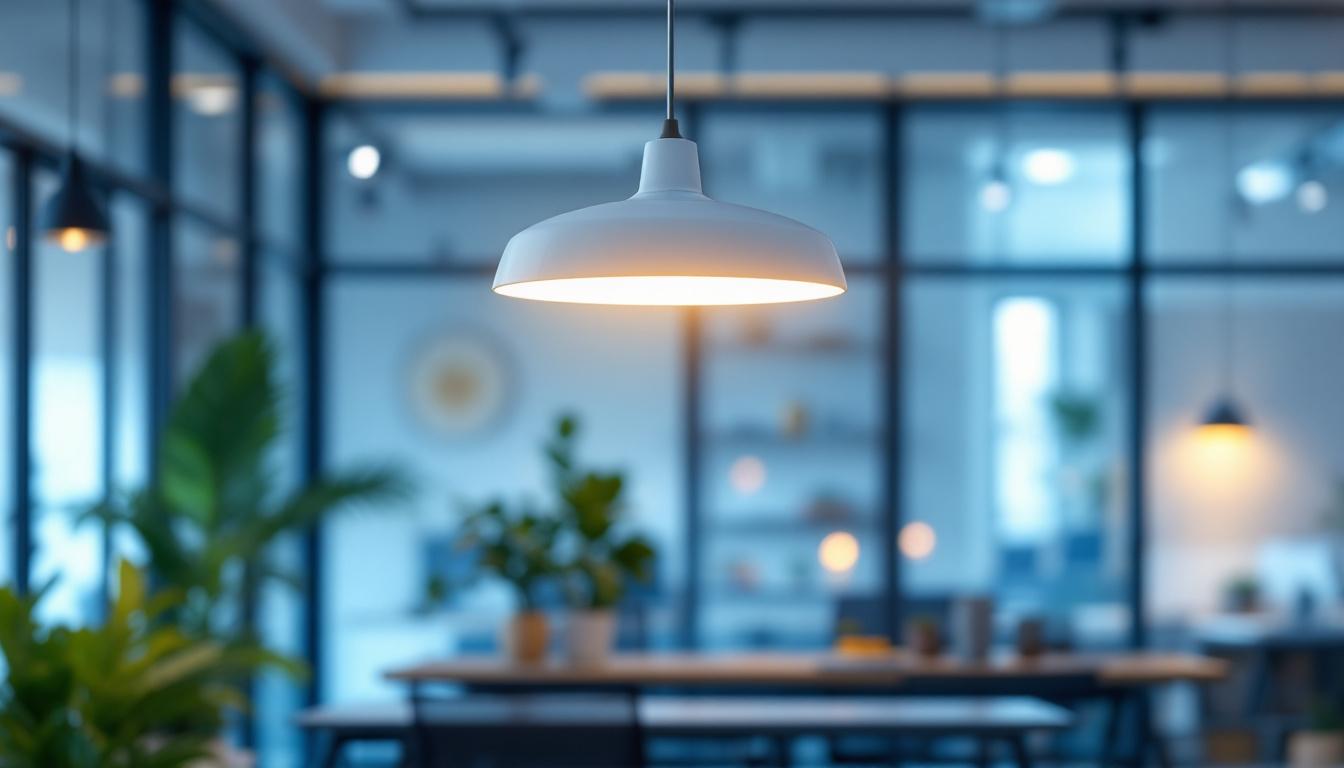
Lighting contractors play a pivotal role in the design and functionality of industrial spaces, particularly in areas like bathrooms where proper illumination is essential. The industrial bathroom setting presents unique challenges and opportunities for creativity, but it is crucial to avoid common pitfalls that can compromise both aesthetics and safety. This guide aims to highlight essential considerations and mistakes to avoid when planning and executing industrial bathroom lighting projects.
Industrial bathrooms differ significantly from residential or commercial bathrooms. They are often designed for high-traffic use, durability, and ease of maintenance. Understanding the specific requirements of these environments is the first step in ensuring effective lighting solutions.
In industrial settings, bathrooms must withstand harsh conditions, including moisture, dust, and potential impacts. Therefore, choosing lighting fixtures that are not only aesthetically pleasing but also durable is essential. Look for materials that are corrosion-resistant and rated for damp or wet locations.
Fixtures should also be designed to endure the rigors of industrial use. For instance, polycarbonate lenses can be a great alternative to glass, as they are less likely to shatter and are easier to clean. Ensuring that the fixtures are robust will save on replacement costs and maintenance in the long run. Additionally, consider the use of LED lighting, which not only offers longevity but also enhances energy efficiency, making it a sustainable choice for industrial environments. The ability of LEDs to operate effectively in extreme temperatures further solidifies their suitability for these spaces.
Another critical aspect of industrial bathroom lighting is compliance with local building codes and regulations. These codes often dictate specific requirements for lighting levels, fixture types, and even energy efficiency standards.
Before starting a project, it is essential to familiarize yourself with the relevant regulations. This knowledge will not only help avoid fines but also ensure the safety and comfort of users. Consulting with local authorities or using resources from professional lighting organizations can provide clarity on compliance issues. Furthermore, understanding the Americans with Disabilities Act (ADA) guidelines is crucial, as they ensure that all users, including those with disabilities, have access to safe and functional bathroom facilities. Incorporating features such as motion-sensor lighting can also enhance accessibility and energy savings, making the bathroom experience more efficient for all users.
Even experienced lighting contractors can fall into traps when designing lighting for industrial bathrooms. Recognizing these common mistakes can help in delivering a successful project that meets both functional and aesthetic needs.
One of the most frequent errors is underestimating the required lighting levels. Industrial bathrooms often require higher illumination than standard bathrooms due to the nature of their use. Insufficient lighting can lead to safety hazards, such as slips and falls, and can also create an uninviting atmosphere.
To determine the appropriate lighting levels, consider the tasks that will be performed in the bathroom. For instance, areas around sinks and mirrors may require brighter lighting for grooming tasks, while other areas may need softer illumination for general use. Utilizing a lighting design software can help in calculating the necessary lumens per square foot for various areas. It’s also important to account for the reflective surfaces in the bathroom, as these can enhance or diminish the perceived brightness. For example, glossy tiles or mirrors can amplify light, while darker colors may absorb it, necessitating adjustments in fixture placement or bulb wattage.
Another common oversight is failing to implement a layered lighting approach. Relying solely on ambient lighting can leave certain areas inadequately lit. Instead, a combination of ambient, task, and accent lighting should be used to create a well-rounded lighting scheme.
For example, ambient lighting can be provided by overhead fixtures, while task lighting can be incorporated through wall-mounted sconces near mirrors. Accent lighting can be used to highlight architectural features or artwork, adding to the overall aesthetic appeal of the space. Additionally, incorporating dimmers can allow for flexibility in lighting levels, enabling users to adjust the brightness according to the time of day or specific needs. This adaptability not only enhances user experience but also contributes to energy savings when full brightness is not necessary.
In today’s environmentally conscious world, energy efficiency should be a top priority. Many contractors overlook the importance of selecting energy-efficient lighting solutions, which can lead to increased operational costs and a larger carbon footprint.
LED fixtures are an excellent option for industrial bathrooms, as they consume less energy and have a longer lifespan compared to traditional incandescent or fluorescent bulbs. Additionally, many LED options are now available in various color temperatures, allowing for greater flexibility in design while still being energy-efficient. Beyond just the choice of bulbs, consider integrating smart lighting systems that can be programmed to adjust based on occupancy or time of day. These systems not only enhance energy efficiency but also improve the overall functionality of the space, ensuring that lights are only used when necessary, thus further reducing waste and costs over time.
The selection of fixtures can significantly impact the overall effectiveness of the lighting design. It is essential to choose fixtures that not only meet the functional requirements but also align with the industrial aesthetic.
Industrial bathrooms often benefit from fixtures that reflect the overall design theme of the space. This could include exposed bulbs, metal finishes, or minimalist designs that enhance the industrial feel. However, it is crucial to balance style with functionality.
For instance, while pendant lights may add a stylish touch, they should not obstruct sightlines or create shadows in critical areas. Understanding the balance between aesthetics and functionality will lead to a more cohesive lighting design.
The placement and spacing of fixtures are equally important. Fixtures should be positioned to minimize shadows and ensure even illumination throughout the space. A common mistake is placing fixtures too far apart, which can lead to dark spots and uneven lighting.
Conducting a lighting layout plan can help visualize the placement of fixtures before installation. This planning phase allows for adjustments and ensures that every area receives adequate light. Additionally, considering the height at which fixtures are mounted can also impact the quality of light distribution.
Safety is paramount in any industrial setting, and lighting design plays a crucial role in maintaining a safe environment. Moreover, maintenance considerations should not be overlooked, as they can affect the longevity and performance of the lighting system.
Incorporating safety features into the lighting design can prevent accidents and injuries. For example, using fixtures with shatterproof lenses can protect against breakage in high-traffic areas. Additionally, installing motion sensors can help ensure that lights are only activated when the space is in use, reducing energy consumption and enhancing safety.
Furthermore, emergency lighting should be considered, especially in areas where power outages may occur. Ensuring that emergency lights are strategically placed can provide illumination during critical moments, aiding in safe evacuation if necessary.
Maintenance is often a significant concern in industrial settings. Choosing fixtures that are easy to clean and maintain can save time and effort in the long run. For instance, selecting fixtures with smooth surfaces and minimal crevices can help reduce the buildup of dust and grime.
Additionally, considering the accessibility of fixtures for bulb replacement and repairs is crucial. Fixtures that are difficult to reach can lead to prolonged periods of inadequate lighting, which can compromise safety and functionality.
As technology continues to evolve, the integration of smart lighting solutions in industrial bathrooms is becoming increasingly popular. Smart technology can enhance the functionality and efficiency of lighting systems, providing numerous benefits.
Automated lighting controls can help optimize energy usage by adjusting light levels based on occupancy or natural light availability. For instance, occupancy sensors can automatically turn lights on and off based on whether the bathroom is in use, ensuring that energy is not wasted.
Additionally, dimming capabilities can allow for adjustments in lighting levels based on the time of day or specific tasks being performed. This flexibility can enhance user comfort while also contributing to energy savings.
Smart lighting systems can also be managed remotely, allowing for real-time monitoring and adjustments. This capability can be particularly beneficial in large industrial facilities where multiple bathrooms are in use.
Remote management can help identify issues such as burned-out bulbs or malfunctioning fixtures, enabling prompt maintenance and minimizing downtime. This proactive approach can significantly enhance the overall efficiency of the lighting system.
Designing effective industrial bathroom lighting requires a thoughtful approach that considers the unique challenges and requirements of these spaces. By understanding the environment, avoiding common mistakes, and implementing best practices, lighting contractors can create solutions that enhance safety, functionality, and aesthetics.
From selecting the right fixtures to incorporating smart technology, each decision plays a crucial role in the overall success of the project. By prioritizing durability, compliance, energy efficiency, and user comfort, lighting contractors can ensure that their industrial bathroom lighting designs meet the highest standards.
Ultimately, successful industrial bathroom lighting is about striking the right balance between form and function, creating spaces that are not only well-lit but also inviting and safe for all users.
Ready to elevate your industrial bathroom lighting projects with the best in spec-grade lighting? Look no further than LumenWholesale. Our commitment to quality and affordability ensures that you have access to the most reliable lighting solutions at wholesale prices that simply can’t be beaten. Say goodbye to middleman markups and hello to a vast selection of premium lighting products that meet the highest industry standards. Plus, with the convenience of free shipping on bulk orders, you can trust that you’re getting the best value without any hidden fees. Enhance your lighting designs today and make your projects shine with LumenWholesale. Wholesale Lighting at the Best Value.

Discover essential insights for lighting contractors on selecting and installing post lights outdoors.

Discover how low-cost grow lights can revolutionize your lighting installation projects.

Discover the key aspects of commercial LED pendant light fixtures that lighting contractors frequently miss.

Discover essential insights and expert tips for lighting contractors on optimizing hospital lighting.